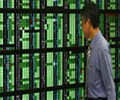

Foreigners’ purchases of Asian bonds surged in June to the highest in two years, as a drop in U.S. bond yields spurred global investors to hunt for better returns amid a low yield environment worldwide.
Asia’s bond inflows last month presented a contrast with the outflow from its equity markets, which were hit by a resurgence of coronavirus infections, to cast doubt over the region’s economic outlook.
Overseas investors bought a net $10.2 billion worth of Asian bonds last month, in the 13th straight month of inflows, data from regulatory authorities and bond market associations showed.
U.S. 10-year Treasury yields dropped 11.3 basis points in June, on signs that the economic recovery from the pandemic could be slowing.
“Real yield differentials over U.S. Treasuries are favourable for a few markets in Asia,” OCBC analysts said in a note this month.
“This backdrop is conducive to foreign inflows in general.”
Foreigners purchased a net $8.3-billion worth of South Korean bonds, on expectations of a hike in its interest rates later this year.
The holdings of overseas investors in South Korean bonds was at 8.7% by the end of June, the highest since at least 2009, the data showed.
A Reuters poll showed 28 out of 32 analysts saw a rate hike in the fourth quarter, while another two saw an increase coming as early as August.
Indonesian and Thai bonds also attracted $1.4 billion and $1.3 billion respectively.
Indian and Malaysian bonds, on the other hand, faced outflows.
Khoon Goh, head of Asian research at ANZ, said he expected the volatility to persist as investors weigh incoming U.S. data against expectations of the timing of the Fed’s bond tapering.
“However, for Asia’s asset markets, we believe the taper will not cause a‘tantrum’ this time, unlike in 2013,” he said.
“Stricter virus containment measures will eventually pay off, along with efforts to speed up national vaccination campaigns.”
Source: Reuters (Reporting by Gaurav Dogra and Patturaja Murugaboopathy; Editing by Clarence Fernandez)